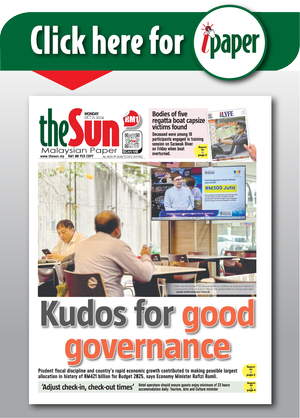PETALING JAYA: Inflation may have eased to 1.1% in June 2025 but vegetable prices are still rising, highlighting persistent bottlenecks in the supply chain and the complex role of intermediaries in shaping food costs.
Key produce such as red chillies, cucumbers and French beans recorded steady month-on-month price increases despite overall deflation in the vegetable subgroup.
The disconnect has prompted concern among farmers, economists and consumer groups who warn that the current distribution model benefits intermediaries more than producers or the public.
Federation of Vegetable Farmers Association Malaysia (FVFAM) president Lim Ser Kwee said retail price hikes are not necessarily being reflected at the farm level.
“For example, the price of red chillies in Kulai increased from RM16.40 to RM16.62 per kilogramme between May and June while tomatoes and kailan also showed similar upward trends.
“Yet, in areas like Cameron Highlands and Kota Tinggi, farm-level prices have remained flat or seen only marginal gains,” he said.
Lim attributed the disparity to a long-standing network of intermediaries – including wholesalers, market agents, transporters and cold chain operators – who dominate the supply chain.
“Farmers lack bargaining power and depend heavily on agents or wholesalers to reach markets. There’s also a lag in farmgate prices adjusting to retail trends,” he said.
He added that farmers remain burdened by high logistics, labour and agricultural input costs. These expenses are often passed on to consumers, but not reflected in actual grower profits.
“Many farmers don’t have access to cold storage, efficient transport or even real-time market pricing, making it hard to optimise returns.”
To address the imbalance, FVFAM has proposed three structural reforms: creating direct-to-market sales platforms under farmer cooperatives, introducing daily reference prices for major vegetables and restructuring wholesale markets by capping commissions and promoting shorter supply chains.
“Farmers earning fair returns and consumers paying reasonable prices are foundational to national food security,” Lim said.
Universiti Teknologi Mara agricultural economist Assoc Prof Dr Fazleen Abdul Fatah echoed these concerns, noting that rising vegetable prices are not solely driven by import dependency or general inflation, but by systemic challenges in production and distribution.
“Even though most vegetables are grown domestically, factors like post-harvest loss due to plant diseases, poor soil quality and climate variability affect yields,” she said, adding that limited harvests reduce supply and drive up prices.
Fazleen said input costs, including fertilisers, pesticides and manual labour, have also continued to rise, further pushing up prices before produce even leaves the farm.
“Transport from farm to collection centres and retail outlets also contributes significantly, especially when the supply chain involves multiple layers,” she said.
On average, she estimated that farmers receive only 20% to 40% of the final retail price, with the remainder going to intermediaries.
“These middlemen – wholesalers, market agents and logistics handlers – often dominate the distribution process, taking profit margins at each stage. The more fragmented the supply chain, the higher the final price, even though the farmer’s profit remains minimal.”
However, Fazleen said strengthening direct-to-consumer models could provide a way forward, if supported by proper infrastructure.
“Empowering cooperatives and online platforms to connect farmers with end-users can reduce price distortion.
“Regulatory guidelines on intermediary profit margins could also prevent excessive markups,” she added.
According to the Statistics Department, food and beverage inflation in June stood at 2.1%, while the vegetables subgroup recorded a further decline – from -5.5% in May to -7.2% in June.
Despite that, key vegetable items such as cucumber, red chillies and French beans saw month-on-month price increases of up to RM1.38 per kilogramme.
With farmers still struggling to break even and consumers feeling the pinch, experts warn that unless structural reforms are prioritised, food affordability and agricultural sustainability will remain difficult to reconcile.









